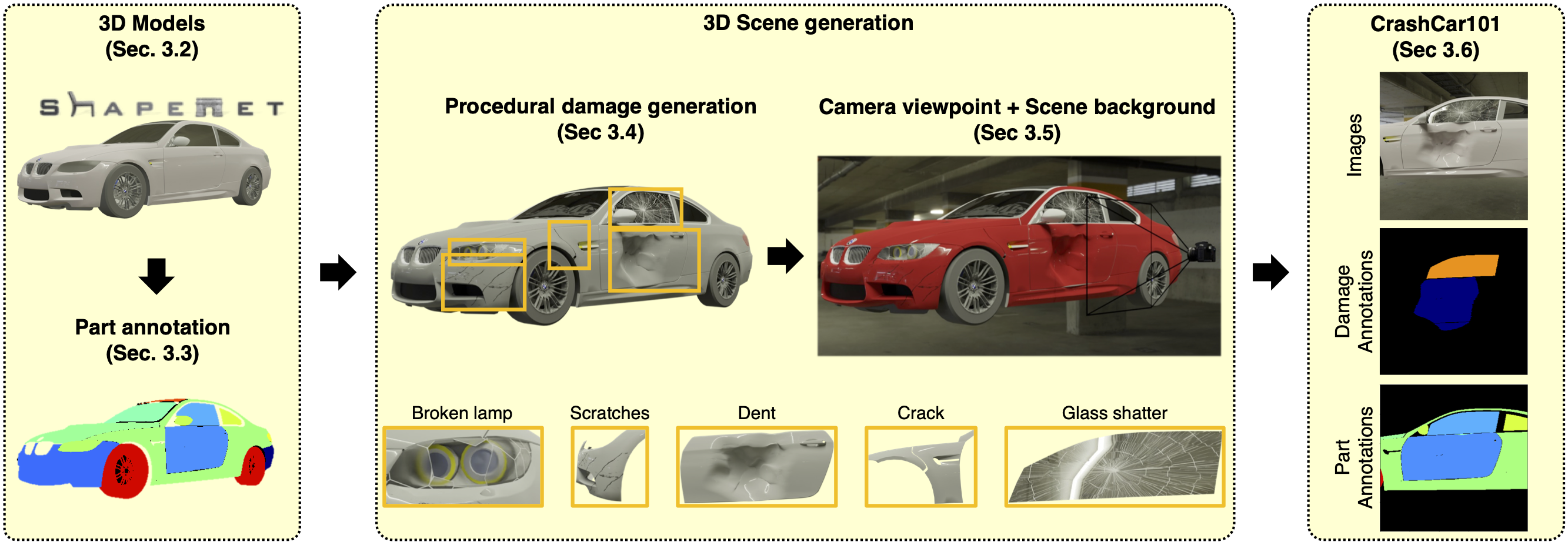Abstract: In this paper, we are interested in addressing the problem of damage assessment for vehicles, such as cars. This task requires not only detecting the location and the extent of the damage but also identifying the damaged part. To train a computer vision system for the semantic part and damage segmentation in images, we need to manually annotate images with costly pixel annotations for both part categories and damage types. To overcome this need, we propose to use synthetic data to train these models. Synthetic data can provide samples with high variability, pixel-accurate annotations, and arbitrarily large training sets without any human intervention. We propose a procedural generation pipeline that damages 3D car models and we obtain synthetic 2D images of damaged cars paired with pixel-accurate annotations for part and damage categories. To validate our idea, we execute our pipeline and render our CrashCar101 dataset. We run experiments on three real datasets for the tasks of part and damage segmentation. For part segmentation, we show that the segmentation models trained on a combination of real data and our synthetic data outperform all models trained only on real data. For damage segmentation, we show the sim2real transfer ability of CrashCar101.
